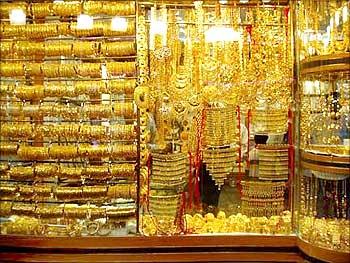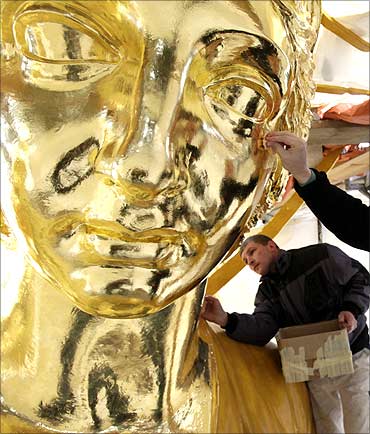 | « Back to article | Print this article |
Fake gold scam hammers Hong Kong jewellers
With the gold price sitting at record highs, Hong Kong jewellers and pawn shops have been hammered by one of the most sophisticated scams in which hundreds of ounces of fake gold were traded in the market.
The gold-mad city has woken up to a massive scam as investigators discovered that at least 200 ounces of fake bullion, worth about $250,000 have been traded at the island`s fabled jewellery souks so far this year, Financial Times reported.
This could be a warning for gold obsessed Indians.
Click NEXT to read further. . .
Fake gold scam hammers Hong Kong jewellers
"It's a very good fake", said Haywood Cheung, president of the Chinese Gold and Silver Exchange Society, Hong Kong's hundred year old gold exchange.
Though officially only 200 ounces of fake gold was recorded as traded, Cheung estimated that 10 times that amount might have infiltrated the retail market. Describing the swindle as " one of the most sophisticated scams to hit Hong Kong gold market in decades", the Financial Times said it has come when the price of gold has soared to record highs of $1,400 an ounce.
Click NEXT to read further. . .
Fake gold scam hammers Hong Kong jewellers
In some cases, traders discover a pure gold coating that must a complex alloy with similar properties to gold.
The fake gold had 51 per cent purity while the rest comprised other metals like nickel, iron, copper, rhodium, iridium and osmium.
So real did the fakes look that even some of the Hong Kong's leading jewellers like 'Even Luk Fook Group' was tricked into buying some before it put its chain of stores on alert.
Click NEXT to read further. . .
Fake gold scam hammers Hong Kong jewellers
"This was the biggest hit ever", FT quoted Paul Law, executive director of the firm as saying and experts say that the highly sophisticated equipment was used to fake the bullion.
The fakes were extremely hard to detect by sight and touch alone.
In most cases, they passed basic scrutiny, only to be revealed later by more sophisticated tests involving high temperatures and chemicals.
In the past, counterfeit gold in Hong Kong and the rest of Asia was either rough and easy to detect, even to the naked eye, or involved gold-plated tungsten, a metal with a similar density to gold, but which traders and jewellers can easily identify.



